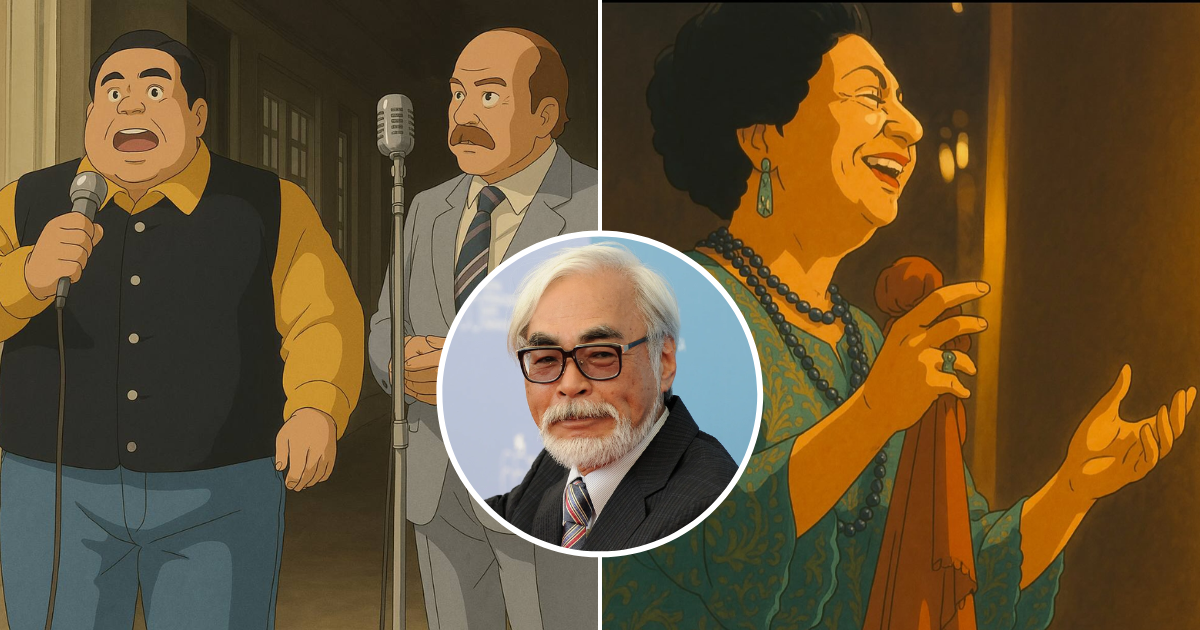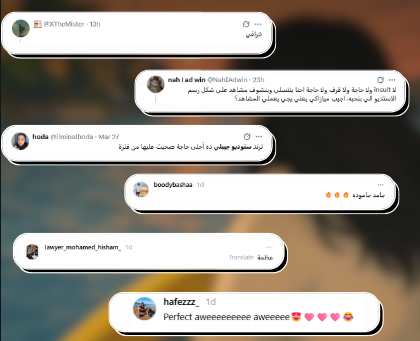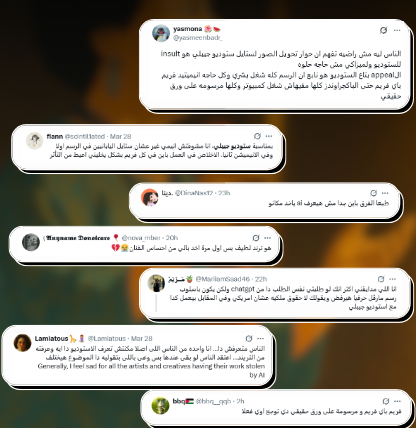Minimum custom amount to enter is AED 2
By donating, you agree to the Privacy Policy and Terms of Service

The Ghibli-style AI craze is taking the internet by storm, but it’s not without its fair share of controversy. What started as a fun and creative trend has now sparked a heated debate, particularly in the world of animation and art.
The idea of transforming well-known figures and scenes into the beloved animation style of Studio Ghibli, known for its whimsical and breathtaking visuals, has become a global phenomenon.
It’s even reached iconic Egyptian legends, such as Om Kalthoum and the infamous characters of Raya w Sekina. But for many, this trend has gone beyond simple admiration, as Egyptians, being their ever-creative selves, pushed the boundaries by recreating iconic scenes from the 2000 film “El Nazer,” with Ghibli-style twists.
View this post on Instagram
Egyptians were absolutely here for it, with social media buzzing with excitement over these nostalgic mashups.
However, while many are embracing the trend, not everyone is on board. The use of AI to generate these Ghibli-inspired images has raised significant concerns among fans of the original Studio Ghibli art style.
For them, the rapid proliferation of AI-generated art feels like a disrespect to the painstaking work of Hayao Miyazaki, the legendary animator behind masterpieces like Spirited Away (2001). Miyazaki himself has made his views clear, famously describing AI-generated art as “disgusting” and stating that he would never use such technology in his own work.
His stance is rooted in his dedication to the craft of animation, where a single scene can take months of careful work and collaboration. For instance, a mere four-second scene in Spirited Away took his team around a year and three months to complete.
The process was slow, meticulous, and filled with personal passion, as Miyazaki constantly pushed his team to perfection. It’s this deep commitment to quality that many argue AI-generated art lacks.
The Ghibli-style AI trend is more about celebrating the magic of animation and mixing cultures in a playful, nostalgic way. The dream-like aesthetic that Studio Ghibli is known for blends seamlessly with the familiarity of Egyptian culture, creating an intriguing visual fusion.
The mashups of beloved figures and scenes from Egyptian pop culture in Ghibli style strike a chord with fans who appreciate the creative, cross-cultural nod to the animation giant’s iconic look.

Still, for others, the whole thing raises eyebrows. The debate around AI art is becoming more nuanced—while it’s easy to be swept up in the whimsical nature of the trend, the concerns about authenticity, creativity, and respect for original craftsmanship cannot be ignored.
Some argue that by using AI to mimic the style of renowned artists like Miyazaki, it undermines the true value of animation, turning something once made with extreme dedication into a simple digital shortcut.

Next: Mo Salah Surprised Girls’ Football Team in Liverpool And Their Excitement Was Everything!
Minimum custom amount to enter is AED 2
By donating, you agree to the Privacy Policy and Terms of Service